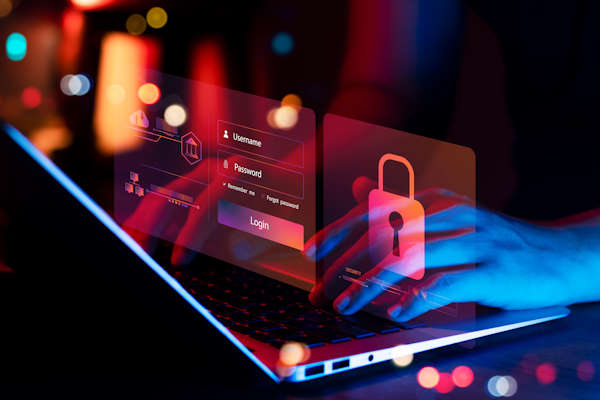Your building likely has physical security measures, such as intruder alarms and CCTV cameras, but what about measures to protect against all types of cyber threats? Cyber attacks are becoming more advanced, and businesses need to keep up with top-tier security measures that protect their business. Not only can your company be held at ransom, but confidential data can be compromised, affecting your company’s reputation.
History of Cyber Threats
The first computer virus is referred to as the Creeper Virus of 1971, an experimental self-replicating programme that moved from computer to computer displaying the same message. This led to the creation of antivirus software, the Reaper programme, which was designed to remove Creeper from infected systems.
Since then, there have been various changes in cyber security to keep up with the level of cyber security threats across all sectors. One of the most significant antivirus software programmes is VirusScan, which was developed by John McAfee in the late ‘80s, which paved the way for more advanced software to protect companies against attacks. Cyber attacks have now evolved from simple experiments to more advanced threats with malicious and motivated intentions, often for financial gain.
Evolving Threats
The rise of AI has caused a sharp development in the intelligence of cyber attacks. AI algorithms are more sophisticated than traditional malware and these types of cyber threats often adapt to advanced security measures, creating variants that outsmart security systems.
Other advancements in cyber security include ransomware as a service (RaaS), which is a business model where developers sell code to other hackers. This essentially labels these hacker groups as service providers, making it much simpler for anyone to launch a ransom campaign.
Several measures of protection, including zero trust architectures (ZTA), are common authentication processes for many businesses, which assume no one inside or outside your organisation is trusted. These systems prevent cyber security threats by making sure everyone and everything proves they’re trusted to access data and systems.
Sector Vulnerability
No sector is safe from cyber security threats – it can happen to any business at any time. No matter what industry your business is in, robust cyber security measures are crucial for long-term protection.
Healthcare
Hackers often target healthcare systems as they’re full of sensitive data and outdated systems. Types of cyber threats in this industry can take the form of phishing attacks, ransomware and data theft and the NHS has seen a number of attacks over the past few years that have disrupted services and put intense strain on resources.
Hackers often go after healthcare as it’s a high-value sector, often with weak cybersecurity measures in place. This is why NHS facilities need robust security to prevent these attacks from happening in the first place.
Government
Governments are also high-value targets, with hacker groups intending to disrupt operations, steal secrets or make political statements. Hacktivism is a new term used to define hackers who aim to make statements through disrupting services or defacing government websites. Financial gain is also a common motive and governments can be held to ransom or funds broken into.
Financial Services
Financial services can be prime targets for cyber security threats because they handle large sums of money and deal with sensitive customer data. Cybercriminals can create phishing attacks by impersonating trusted institutions like banks or regulators, coercing employees to fall for their traps.
Ransomware attacks can also lock files or systems until ransoms are paid, which can lead to a whole host of reputational damage for the company – forcing them to pay up faster.
Security Improvements
The sharp increase in cyber threats has led to changes in cyber security measures to keep up with the rise. Many businesses are setting up security measures to fix vulnerabilities before they get targeted, helping them to prevent attacks instead of dealing with them once they arise.
It’s good practice to set up security measures every time a new tool or system is introduced into a company, ensuring protection is embedded from day one. AI can also be used to protect against some types of cyber threats, analysing user behaviour to detect unusual activity and respond to threats in real time.
How ID Security Keeps You Safe
Take back control over the security of your business through physical and cyber security measures. For more information on how to protect your business for the long run, contact the ID Security team to discuss how to set up a bespoke security system for your needs

